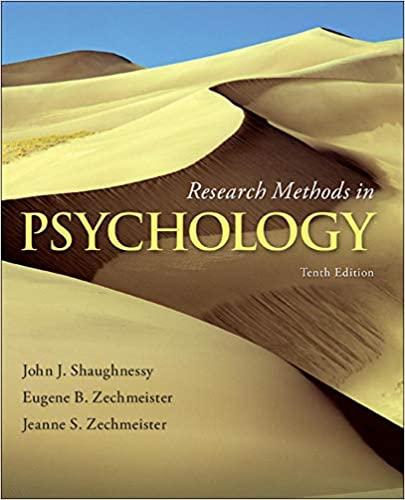A psychologist hypothesized that older people take longer to process complex visual patterns. He tested 20 older
Question:
A psychologist hypothesized that older people take longer to process complex visual patterns. He tested 20 older (ages 65–70) and 20 younger individuals using an embedded figures test.
In his procedure, a simple figure was displayed on a tablet screen, followed immediately by a complex figure that contained the simple figure. Participants’
task was to locate the simple figure as quickly as possible in each of 10 trials. When they found the figure, they tapped its location on the tablet.
Results indicated that average response times for finding the simple figure were longer for the older group than the younger group. The difference was statistically significant.
A. The psychologist concluded that the difference in response times was caused by diminished ability among older adults to process complex information. What information in this summary allows the psychologist to make this causal inference? What information is lacking?
B. Another researcher hypothesized that older individuals prefer accuracy over speed (i.e., they make sure they’re correct before responding), relative to younger adults. He added another independent variable, reward, with two levels. Participants in the accurate condition were rewarded for accurate judgments, and participants in the speed condition were rewarded for fast response times. Describe the design of this experiment, including the conditions.
C. The dependent variable was the average response time (in seconds) for correct identifications. What effects are present in the following data? (Assume equal cell sizes and nonzero differences are statistically significant.)
What do the results indicate about the second researcher’s theory?
Step by Step Answer:

Research Methods In Psychology
ISBN: 9780077825362
10th Edition
Authors: John Shaughnessy, Eugene Zechmeister, Jeanne Zechmeister





